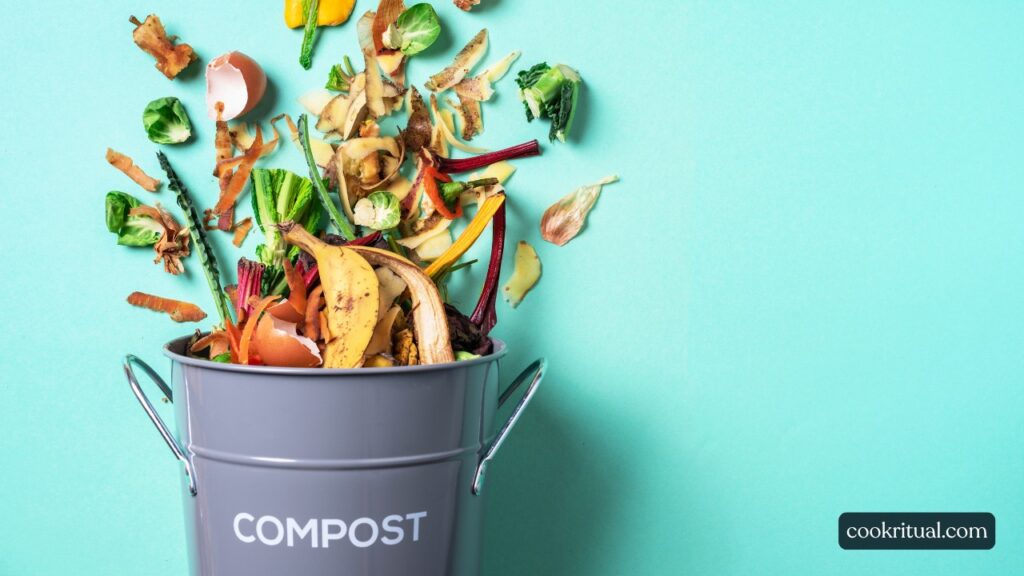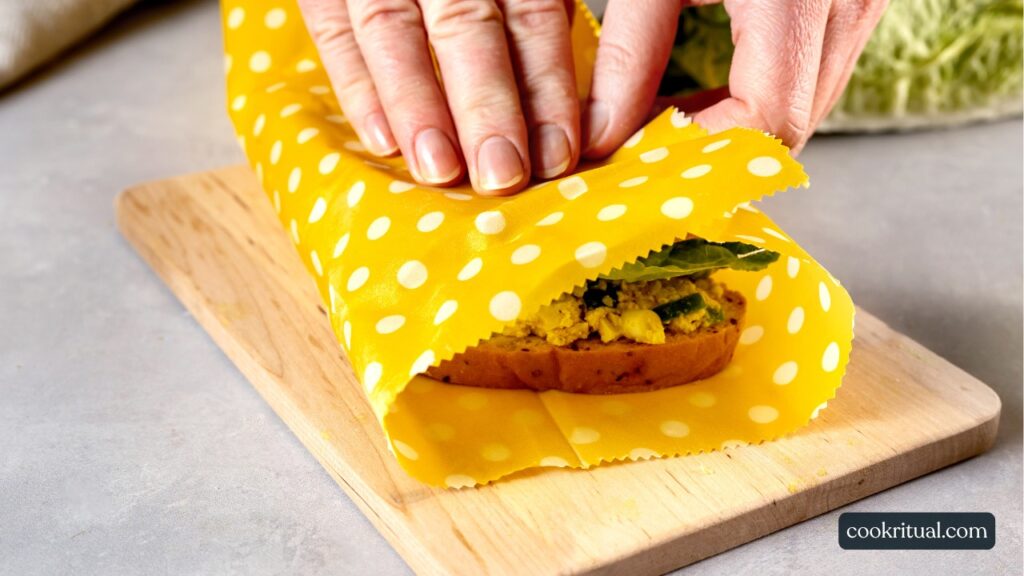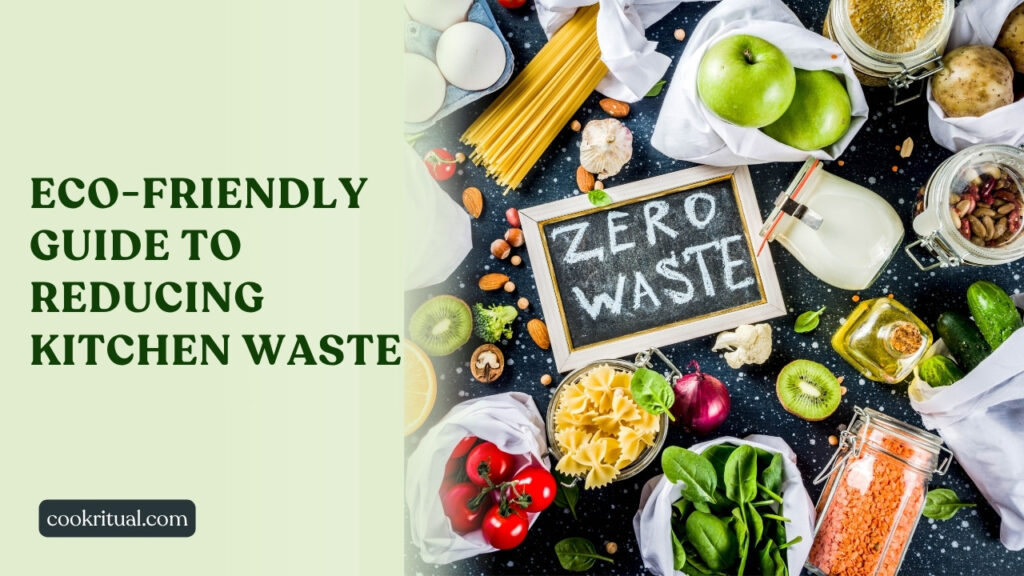Reducing kitchen waste is one of the easiest and most impactful ways we can live more sustainably—starting right at home. From cutting down on food scraps to ditching single-use plastics, small changes in our daily kitchen habits can lead to big wins for the planet and our health.
In today’s fast-paced world, it’s easy to overlook how much waste we generate while cooking and cleaning. Whether it’s tossing unused vegetables, overbuying groceries, or relying on disposable products, these habits not only cost us money but also harm the environment. Fortunately, there’s a better way.
In this friendly, expert-backed guide, we’ll walk through everything health-conscious families and busy professionals need to know about creating a low-waste kitchen. You’ll learn why reducing kitchen waste matters, discover practical strategies to implement today, and find eco-friendly tools that make the switch easier than ever. Think of this as your go-to manual for building a kitchen that’s not just functional—but truly sustainable.
Contents
- 1 Why Reducing Kitchen Waste Matters
- 2 Getting Started with an Eco-Friendly Kitchen
- 3 Top Eco-Friendly Kitchen Practices to Reduce Waste
- 4 Must-Have Products for a Zero Waste Kitchen
- 5 Common Kitchen Waste Problems and How to Solve Them
- 6 Step-by-Step Guide: How to Transition to a Greener Kitchen
- 7 Eco-Friendly Kitchen FAQs
- 8 Actionable Recommendations for a Greener Kitchen
- 9 Conclusion
Why Reducing Kitchen Waste Matters
Environmental impact of food and packaging waste
Every year, millions of pounds of food and plastic end up in landfills. This doesn’t just waste resources—it also harms the planet. When food breaks down in landfills, it releases methane gas, a harmful greenhouse gas that speeds up climate change.
Packaging waste is another issue. Items like plastic wrap, Styrofoam, and single-use containers often can’t be recycled. They can take hundreds of years to break down. According to the U.S. Environmental Protection Agency (EPA), food is the single largest category of waste in American landfills.
By cutting kitchen waste, we help reduce pollution, save energy, and protect natural resources.
Economic benefits of a zero waste kitchen
Throwing away food is like throwing away money. When we buy more than we need or forget leftovers, we lose hard-earned cash. The average American family throws out over $1,500 in food each year, according to a report by ReFED.
Reducing waste helps us:
- Spend less on groceries.
- Avoid extra trash collection fees.
- Use resources more wisely.
A zero waste kitchen isn’t just good for the earth—it’s good for our wallets too.
Social responsibility and long-term sustainability
When we reduce waste, we set a positive example for others. Our kids learn to make better choices. Our communities grow stronger. Small changes at home can lead to bigger shifts in food systems and supply chains.
Choosing eco-friendly kitchen habits supports a future where food is valued, not wasted. It also helps ensure that resources are available for the next generation.
Getting Started with an Eco-Friendly Kitchen
Assessing your current kitchen waste
Before making changes, we need to know where waste comes from. Start by:
- Looking in your trash and compost bins.
- Noting how often you throw out leftovers or spoiled food.
- Tracking what packaging you toss out most often.
This simple step helps us spot wasteful habits and find easy ways to fix them.
Setting realistic zero-waste goals
Don’t try to go zero-waste overnight. Start small and build from there. Pick one or two habits to change each week, such as switching from plastic bags to reusable ones or meal planning to avoid food spoilage.
Setting clear, small goals keeps things doable and less stressful.
Key habits of a sustainable kitchen
To make lasting change, build routines that support your eco goals. Try these:
- Compost food scraps instead of tossing them. Learn how with this beginner’s guide from the USDA.
- Choose reusable items like cloth towels or beeswax wraps.
- Buy in bulk to cut packaging waste.
- Freeze leftovers or extra produce to avoid spoilage.
Over time, these green kitchen habits become second nature—and your home becomes a cleaner, smarter, and more sustainable space.
Top Eco-Friendly Kitchen Practices to Reduce Waste
Composting food scraps effectively
Composting is one of the best ways to turn waste into something useful. Instead of throwing away peels, coffee grounds, or eggshells, compost them to create rich soil for plants.
You don’t need a big yard. Countertop compost bins or worm composting systems work great in small spaces. EPA’s composting basics can help you get started with ease.
Choosing reusable kitchen products over disposables
One big step toward reducing waste is saying goodbye to single-use products. Replace them with items that last:
- Glass containers instead of plastic.
- Silicone storage bags over zip-locks.
- Reusable dishcloths over paper towels.
- Beeswax wraps over cling film.
These swaps not only cut waste but also save money in the long run.
Switching to biodegradable and plastic-free alternatives
When reusables aren’t an option, go for biodegradable or compostable items. Look for:
- Plant-based sponges
- Compostable trash bags
- Wooden scrub brushes
These break down naturally and reduce your plastic footprint. Check labels or certifications from trusted groups like the Biodegradable Products Institute (BPI) to ensure you’re buying the real deal.
Practicing low-waste meal prep and smart shopping
A little planning goes a long way. With smart habits, we can prevent food from ending up in the trash. Try:
- Meal planning to buy only what you need.
- Using a grocery list to avoid impulse purchases.
- Storing food properly to keep it fresh longer.
- Cooking with what’s already in the fridge.
This helps reduce food waste, cuts grocery bills, and makes cooking stress-free.
Must-Have Products for a Zero Waste Kitchen
Best compost bins for home kitchens

A good compost bin makes it easy to turn food scraps into soil. There are many small, odor-free options perfect for any kitchen. Look for bins with:
- Tight lids to prevent smells
- Charcoal filters for fresh air
- Easy-to-clean liners or buckets
Top picks include stainless steel countertop bins and under-sink compost caddies. Good Housekeeping offers reviews on the best bins for all kitchen sizes. Choose what fits your space and composting style.
Reusable alternatives: beeswax wraps, cloth towels, silicone bags

Single-use plastics are a big source of waste. But we can swap them for long-lasting, reusable items like:
- Beeswax wraps for storing cheese, fruits, or bread
- Cloth towels instead of paper towels
- Silicone food bags in place of plastic sandwich bags
These items are washable, safe, and reduce how much we toss each week. Brands like Stasher and Bee’s Wrap are popular choices trusted by eco-conscious families.
Upcycled or sustainably-made kitchen tools
Why buy new when we can repurpose or upcycle? Eco-friendly kitchen tools made from bamboo, recycled metal, or repurposed wood are smart picks. Look for:
- Bamboo cutting boards
- Recycled stainless steel utensils
- Reclaimed wood shelves
These tools last long and reduce the need for harmful plastics. Check for eco-certifications and brands that support fair trade and green sourcing, like Green America.
Organic and eco-friendly cleaning supplies
Cleaning products can be full of harsh chemicals. Instead, choose plant-based and biodegradable cleaners. Look for:
- Non-toxic dish soap
- Natural scrubbing powders
- Refillable spray bottles
Brands like Seventh Generation, Blueland, and ECOS offer trusted green cleaning options. You can also make simple cleaners at home using vinegar, baking soda, and lemon juice. EPA’s Safer Choice label is a great guide when picking safe products.
Common Kitchen Waste Problems and How to Solve Them
Dealing with food spoilage and leftovers
Spoiled food is one of the biggest kitchen waste issues. To fight this:
- Use a first-in, first-out rule in the fridge
- Label leftovers with dates
- Freeze extra meals before they go bad
Cooking in smaller portions and repurposing leftovers—like turning roasted veggies into soup—can also help. According to Harvard’s Food Law and Policy Clinic, proper storage and meal planning greatly reduce spoilage.
Reducing packaging waste from grocery shopping
Grocery packaging creates a mountain of waste each year. Try these smart swaps:
- Bring reusable produce bags
- Buy in bulk using refillable containers
- Choose loose produce over pre-packaged
Many stores now support bulk shopping or offer plastic-free produce. The Plastic Pollution Coalition also lists shops and tips for low-waste grocery shopping.
Managing plastic use in cooking and storage
Plastic is everywhere in the kitchen, but we can limit it. Try:
- Using glass or stainless steel containers
- Cooking with wooden or silicone tools
- Avoiding cling wrap and choosing lids or beeswax covers
Storing dry goods in glass jars and reheating food in non-plastic containers also keeps us safer. Plastic can release chemicals like BPA into food—NIH warns this may impact health over time. Switching to safe materials is better for both the earth and our families.
Step-by-Step Guide: How to Transition to a Greener Kitchen
Week 1: Eliminate single-use plastics

Start with the biggest offenders. In week one:
- Replace plastic wrap with beeswax wraps
- Use cloth napkins and towels
- Switch to reusable shopping and produce bags
Take stock of what’s in your drawers and donate what you no longer need. Every small swap makes a big difference.
Week 2: Start composting and recycling right
This week, begin composting scraps and double-check your recycling habits. Many people recycle wrong—items like greasy pizza boxes or plastic bags don’t belong. Use local city guides or the Recycle Smart MA tool to know what’s accepted.
Set up a compost bin or drop off scraps at a local site. Composting reduces waste and creates something useful from food.
Week 3: Adopt low-waste cooking techniques
Plan meals around what you already have. Use whole ingredients and avoid processed, over-packaged foods. Roast extra veggies for lunch, blend wilted greens into smoothies, and keep veggie scraps for broth.
These habits reduce waste and make cooking more creative.
Week 4: Build a routine of sustainable practices
Now it’s time to form lasting habits. Try:
- Creating a weekly meal plan
- Cleaning the fridge before grocery trips
- Shopping with a reusable kit (bags, jars, containers)
Sustainability is a journey, not a race. Keep track of what’s working and share your wins with others. Together, we can build better kitchens—and a cleaner world.
Eco-Friendly Kitchen FAQs
How can I reduce kitchen waste on a tight budget?
Reducing kitchen waste doesn’t have to be expensive. Focus on simple habits like meal planning, using leftovers creatively, and buying in bulk. Reusable items such as cloth towels and beeswax wraps can be affordable when bought once and used for a long time.
You can also make your own cleaning products with common ingredients like vinegar and baking soda. The EPA’s guide on waste reduction offers budget-friendly tips anyone can follow.
What is the easiest way to start composting at home?
Starting composting is easy with a small countertop bin or a compost caddy. Keep fruit and veggie scraps, coffee grounds, and eggshells in your bin. Avoid meat, dairy, and oily foods. If you live in an apartment, try worm composting (vermicomposting) or check if your city has compost drop-off sites.
The USDA’s backyard composting guide is a great resource for beginners.
How do I know if a product is truly eco-friendly?
Look for certifications and labels such as USDA Organic, BPI Certified Compostable, or EPA Safer Choice when buying products. These ensure items meet strict environmental and safety standards.
Also, research brands’ practices and transparency. Websites like Green America provide lists of verified eco-friendly brands. Remember, the most eco-friendly choice is often the reusable or durable product.
Actionable Recommendations for a Greener Kitchen
Start small, build habits
Begin with easy swaps like reusable bags or composting scraps. Small actions add up over time, making your kitchen greener without stress.
Plan meals to reduce food waste
Meal planning helps you buy only what you need. Use apps or simple lists to avoid over-purchasing. Leftovers can become new meals, reducing waste and saving money.
Invest in quality, reusable kitchen tools
Choose items like stainless steel containers, bamboo utensils, or silicone storage bags. These last longer and create less waste than disposable options.
Educate and involve your family
Teach family members about kitchen waste and why it matters. Get everyone involved in composting, shopping, and cooking sustainably. This builds lasting habits.
Conclusion
Reducing kitchen waste is an easy way to live more sustainably, save money, and protect our planet. By understanding why kitchen waste matters and making small, practical changes—like composting, choosing reusable products, and smart meal planning—we can all build eco-friendly kitchens that work for busy lives.


